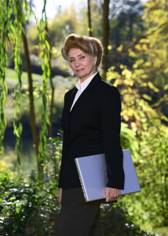Leading Water Treatment Expert Calls for 100% Waste Water Recycling
Press release
Leading Water Treatment Expert Calls for 100% Waste Water Recycling
Interview with Total Water Management Advocate Neil Grigg, PhD, on Sharon Kleyne Hour Power of Water Radio Show
Hear the Sharon Kleyne Hour Power of Water on World Talk Radio, Voice America, Green Talk Network and Apple iTunesp
Humans do not do nearly as good a job of cleaning up their waste water as they could says leading waste water management expert Neil Grigg, PhD. In a recent radio interview, Grigg advocated a program in which 100% of all water used by humans would be returned to the natural environment as pure as when it was removed. Solid waste removed from the waste water would also be recycled and returned to the environment.

Grigg explained his Total Water Management (TWM) concept on the Sharon Kleyne Hour Power of Water radio show of September 15, 2014. The syndicated show may be heard live or by podcast on VoiceAmerica or Apple iTunes.
Neil S. Grigg, PhD, is an international water policy consultant and Professor of Civil and Environmental Engineering at Colorado State University. Grigg is author of, Total Water Management: Leadership Practices for a Sustainable Future (AWWA, 2008).
In addition to hosting the Sharon Kleyne Hour Power of Water, Sharon Kleyne is Founder and Research Director of Bio-Logic Aqua Research, the show's sponsor, which specializes in global research and technology relating to fresh water, the atmosphere and dehydration. Nature's Tears® EyeMist® is the Research Center's signature consumer product for dry eyes.
In Grigg's TWM program, all future sewage and waste water treatment plants would have the capacity to process and recycle 100% of waste water produced by humans, including both liquid and solid components. Existing plants would eventually be upgraded to this capacity.
Waste water entering most sewage treatment plants, according to Grigg, contains a wide assortment of solid material. This includes human waste, food waste, decomposing bacteria, disease bacteria, grease, soap, industrial effluent, fertilizer residue, chemical residue, medical and drug residue, household cleaners, paint, etc. Water with this level of contamination cannot be safely returned to the environment. Current technology has the ability to clean this water to drinkable standards, Kleyne notes, but the process is expensive and most people are unwilling to drink such water.
Typically, says Kleyne, most waste water in the United States undergoes "primary treatment" - or settling ponds - and then "secondary treatment," in which dissolved and suspended material is removed, largely through microbial action. Primary settling ponds are inexpensive and "passive" whereas secondary treatment requires aerators that use huge amounts of electricity. Tertiary treatment, to bring the water to drinkable ("potable") or near drinkable standards, is undertaken when there is no safe place to return secondary water to the environment.
Water that undergoes tertiary treatment, say Kleyne, is usually returned to the environment at locations such as reservoirs or rivers where it will quickly be taken up and sent through a filtration and chlorination plant to be again used as tap water.
In Grigg's Total Water Management plan, all sewage treatment plants would be designed to perform tertiary or better water treatment. Solid material removed from the water would also be processed and returned to the environment. The net result would be virtually no waste and the effect on the environment would be minimal.
There is currently a small market for processed sewage sludge as fertilizer, according to Kleyne. Also, the bacterial decomposers in sewage sludge have been used to produce methane gas, a marketable fuel.
A recent Science Daily article suggested that the power required for secondary aeration could be generated by the bacteria found in the treated sewage.*
Kleyne sees a much larger opportunity. Current industrial scale farming methods, according to Kleyne are degrading to soils and utilize unnecessarily large quantities of water. It is well known that soil with high organic and microbial content produces larger and more nutritious crops. In addition, say Kleyne, soil with high organic ands microbial contents are better at retaining moisture and therefore require considerably less watering to achieve the same crop yield.
A soil enhancing or revitalizing product manufactured from sewage treatment sludge, with high organic and microbial content, says Kleyne, could significantly reduce the amount of water needed for irrigation (which frees up water for drinking and industry), and could greatly expand the kinds of areas where crops may be economically produced, such as deserts, rain forests, low quality soils, depleted soils, etc.
* "Unique water cleanup for rural areas developed," Science Daily, September 18, 2014
http://www.sciencedaily.com/releases/2014/09/140918210136.htm
Health + Diet
Environment
|
|
 Sharon Kleyne
Sharon Kleyne